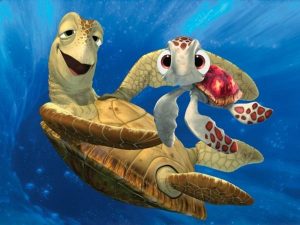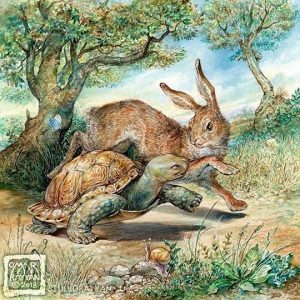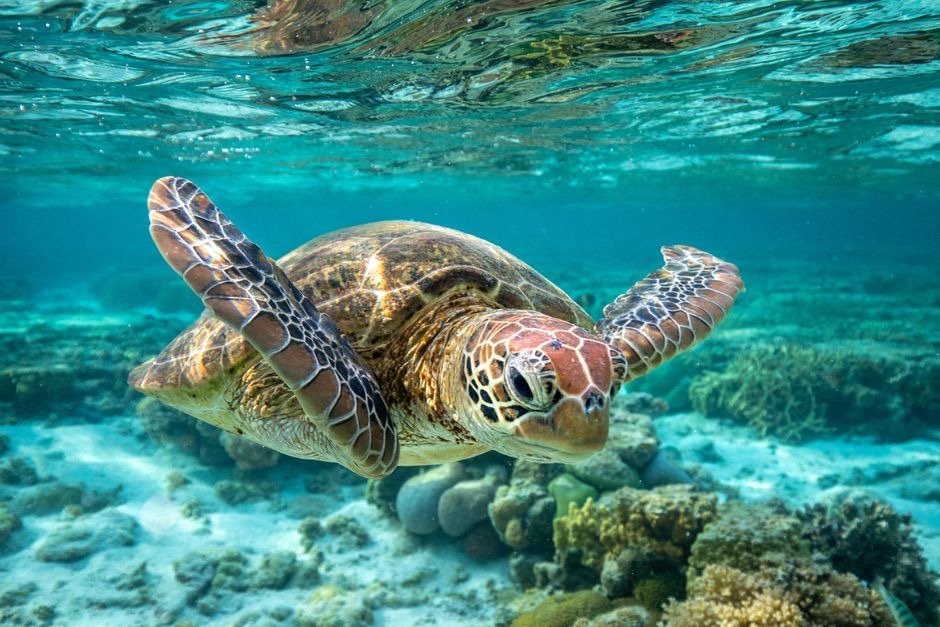Our Relationship with These Primordial Wonders of Nature
There is something undeniably majestic about the deliberate movement of a turtle. Whether it is the slow, composed crawl of a tortoise, or the quiet ease of a sea turtle in blue water, the presence of these creatures strikes us with a kind of ancient familiarity, captivating our hearts and minds.
This species, in fact, has become a symbol spanning religion, culture, and time. Images of turtles in Ancient Egypt were a common defense against evil, just as my childhood Teenage Mutant Ninja Turtles bed sheets gave me an inexplicable feeling of comfort.

Squirt and Crush from Finding Nemo. Image: Disney
The earliest known fossils of the species date to 220 million years ago, yet cartoonish characters of these reptiles continue to permeate today’s popular culture. Whether we are aware of it or not, turtles are woven into the social fabric of our personal, spiritual, and political lives. Take for example the animated depiction of Crush and Squirt in the Disney film Finding Nemo. The well-known father/son duo embody the easy going flexibility of literally going with the flow. Though these turtle characters fit nicely into the human notion of impractical idealist, they represent a deeper understanding of the unbothered peace to be found only in the present.
LEARN ABOUT THE CAMPECHE TURTLE PROJECT
The virtue of patience is perhaps best epitomized by the well known western fable “The Tortoise and the Hare”. The tortoise is physically unremarkable when challenged to a contest of speed, however the tortoise somehow knows that trusting internal ability, despite external adversity, results in self-evident success. This narrative of tenacity and unglorified strength taught us at a young age that resiliency and patience prevails over alternative avenues of fleeting skills and trickery. The famous fable further reiterates the turtle as a symbol of humility and wisdom in a world of presumptuous competitors, an identity built upon by turtle characters to come.

The Tortoise and the Hare is a classic western fable. Image: Omar Rayyan
Despite having an enlightened modesty and slow physical prowess, sea turtles are also illustrated as a force to be reckoned with as seen in the infamous Pokemon character Squirtle. This beloved, generation 1 personality demonstrates the elemental strength of water, as well as the fundamental fortitude in retreating when threatened. The physical durability of Squirtle’s shell, along with his protective power of water, introduces a rougher dimension of survival, one that exists in the parallel world of storytelling as well as one that exists in a harsher reality.
Of the more recent images of turtles in popular culture, there is one that is admittedly hard to look at. Sea turtles injured by the reckless disposal of plastic straws have become the poster animal in recent environmental reform. Photographs of these sacred symbols in suffering have ignited a global campaign against single-use plastics. These turtles tell us a different story, one that warns us of our own irresponsibility and moral shortcomings.
The stories we have developed around the wisdom of turtles have become an integral part of the way we understand ourselves in relation to the environment. We see them as something of the earth that is governable, but that demands and deserves protection and respect. In some ways turtles remind us of something as profoundly primordial as nature itself, the peaceful persistence of an enduring life force that asks for nothing in return.
Kassidy Freitas writes environmental features on wide-ranging topics for multiple news and media sources.


Trackback: ติดเน็ตบ้าน AIS